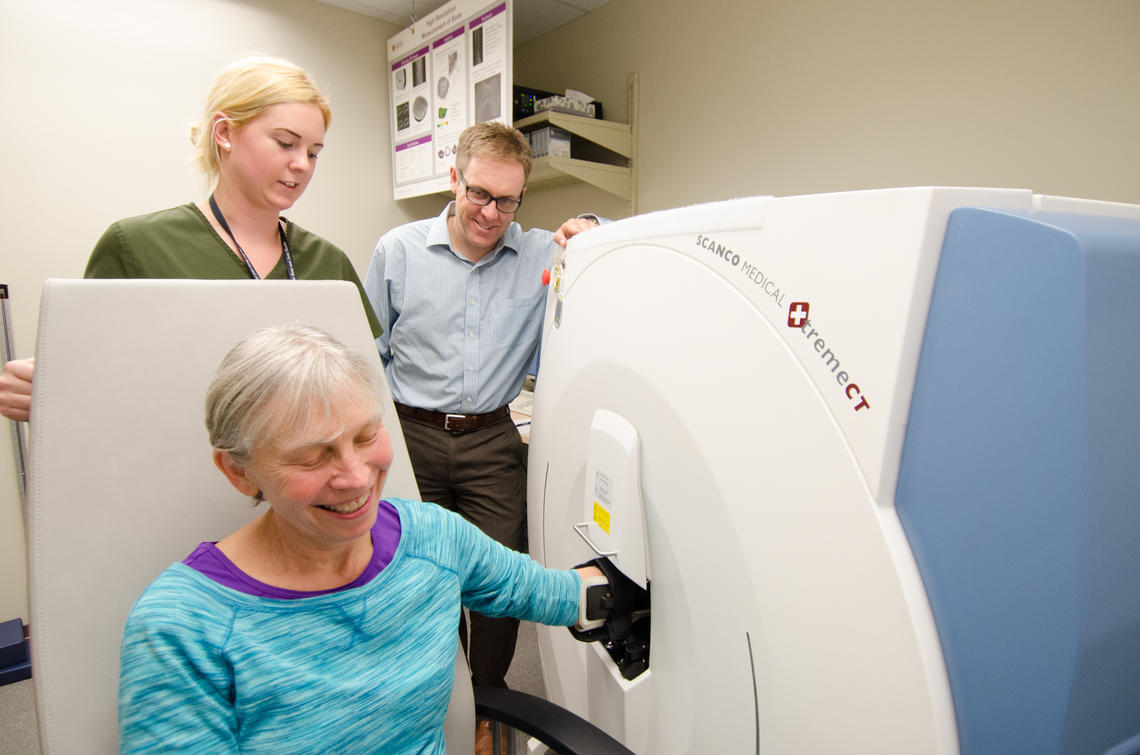As healthcare systems increasingly recognize their environmental impact, the surgical field is exploring new ways to balance clinical innovation with ecological responsibility. Spinal surgery, which often relies on energy-intensive processes and non-recyclable materials, is now seeing a shift toward sustainable solutions. Dr. Larry Davidson, a specialist in spine health, believes that using eco-friendly materials in spinal implants is not only possible but necessary to align modern medical care with long-term environmental stewardship.
From implant production to packaging waste, every element of spinal surgery contributes to the medical industry’s carbon footprint. As the demand for spinal procedures grows globally, so does the urgency to adopt materials and manufacturing processes that reduce waste, conserve resources and minimize long-term ecological harm. Fortunately, advancements in biomaterials and engineering are making sustainable spinal implants a reality.
Why Sustainability Matters in Spinal Surgery
Surgical procedures, including spinal operations, generate significant amounts of waste, from single-use instruments to packaging and unused implants. Traditional spinal implants are often made from metals such as titanium or stainless steel, which require mining, refining and complex fabrication processes with substantial energy costs. In addition, some implants may be discarded due to overstocking or expiration before use.
By adopting sustainable materials and circular design principles, spinal surgery can contribute to the broader effort to reduce healthcare’s environmental burden. Sustainability in this context doesn’t mean compromising safety or efficacy; it means finding innovative ways to maintain performance while being mindful of environmental impact.
Emerging Sustainable Materials
Several material classes are now being investigated and adopted as sustainable alternatives in spinal surgery:
1. Bioresorbable Polymers
Derived from renewable sources, bioresorbable materials like polylactic acid (PLA) and polycaprolactone (PCL) degrade naturally within the body over time. These materials reduce long-term implant presence and eliminate the need for removal surgeries. They also decrease the volume of medical waste generated postoperatively.
2. Recyclable Metal Alloys
Some new alloys are designed to be recyclable after sterilization, allowing unused implants to re-enter the supply chain rather than being discarded. Manufacturers are also exploring lower-emission methods for producing titanium and magnesium-based materials.
3. Bioceramics and Natural Composites
Materials like calcium phosphate, derived from natural mineral sources, are being used in bone graft substitutes and spinal cages. These bioceramics are biodegradable, support bone integration and can be manufactured using less energy than traditional metals.
4. Plant-Based or Upcycled Polymers
Sustainable bioplastics made from cellulose, corn starch or agricultural waste are gaining traction as components in surgical tools and packaging. While still in the early development stages, these materials may one day be adapted for use in spinal implants or surgical guides.
Eco-Friendly Manufacturing Innovations
In addition to material selection, the way implants are manufactured plays a significant role in sustainability. Additive manufacturing (3D printing) makes it possible to create custom spinal implants with minimal waste. This technique uses only the necessary amount of material and eliminates the need for subtractive processes that produce excess scrap.
Some manufacturers are also transitioning to clean energy sources for production facilities and reducing water usage through closed-loop systems. These operational shifts not only lower environmental impact but can also improve cost efficiency in the long run.
Surgical supply companies are beginning to offer carbon-neutral implant kits and recyclable packaging. By incorporating life cycle assessments into product development, they can quantify the environmental savings and share that data with hospitals and providers committed to green initiatives.
Benefits for Patients and Providers
Using sustainable materials in spinal surgery benefits the environment and holds promise for improving patient outcomes and system-wide efficiencies.
Biodegradable implants, for example, reduce the risk of long-term complications associated with permanent foreign objects. Patients may experience less postoperative discomfort and avoid the need for removal surgeries, lowering overall healthcare costs and recovery time.
Lighter, eco-friendly implants can also improve biomechanics and reduce stress on surrounding tissues. Composite and biodegradable options often offer mechanical properties that better mimic natural bone, which can lead to improved fusion rates and reduced subsidence.
Aligning Surgical Innovation with Global Responsibility
Hospitals and surgical centers are increasingly being evaluated not only on clinical outcomes but also on sustainability metrics. Green certifications, such as LEED or ISO 14001, often include criteria related to surgical waste reduction and environmentally responsible purchasing.
Integrating sustainable spinal materials into surgical workflows helps institutions meet these benchmarks while demonstrating a commitment to responsible innovation. It also enhances patient trust as individuals become more aware of and concerned about the environmental impact of their healthcare choices.
Dr. Larry Davidson remarks, “Emerging minimally spinal surgical techniques have certainly changed the way that we are able to perform various types of spinal fusions. All of these innovations are aimed at allowing for an improved patient outcome and overall experience.” As these surgical innovations converge with eco-conscious practices, the future of spinal care is poised to deliver both clinical excellence and environmental stewardship.
Current Challenges and Future Directions
Despite progress, several challenges must be addressed before sustainable spinal implants become mainstream.
- Regulatory Approval: Many sustainable materials must undergo extensive testing and validation to meet FDA and international safety standards. Long-term clinical data are essential to ensure efficacy and durability.
- Cost and Scalability: Green materials and clean manufacturing technologies often come with higher upfront costs. Wider adoption can require improved scalability and broader access across healthcare markets.
- Surgeon Training and Acceptance: As with any new technology, integrating sustainable implants into existing surgical protocols requires education and familiarity. Surgeons must be trained to use these materials effectively and understand their unique handling characteristics.
Building a Greener Future for Spine Care
Sustainable materials in spinal surgery are redefining what it means to innovate in healthcare. They signal a new era where clinical excellence and environmental responsibility go hand in hand. As research deepens and technology matures, we can likely see greater diversity in eco-friendly implant offerings and a stronger alignment between patient needs and planetary health.
From bioresorbable cages to recyclable alloys, these materials are not just alternatives; they are powerful tools that can reshape the future of spine care with minimal environmental trade-offs. Hospitals and surgeons who embrace this shift can be at the forefront of a movement that combines medical precision with mindful stewardship. Integrating sustainable materials into spinal procedures is more than a trend; it’s a necessary development that supports healthier outcomes for both patients and the planet.



